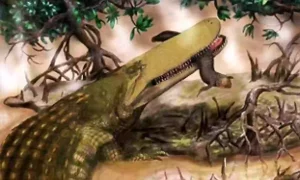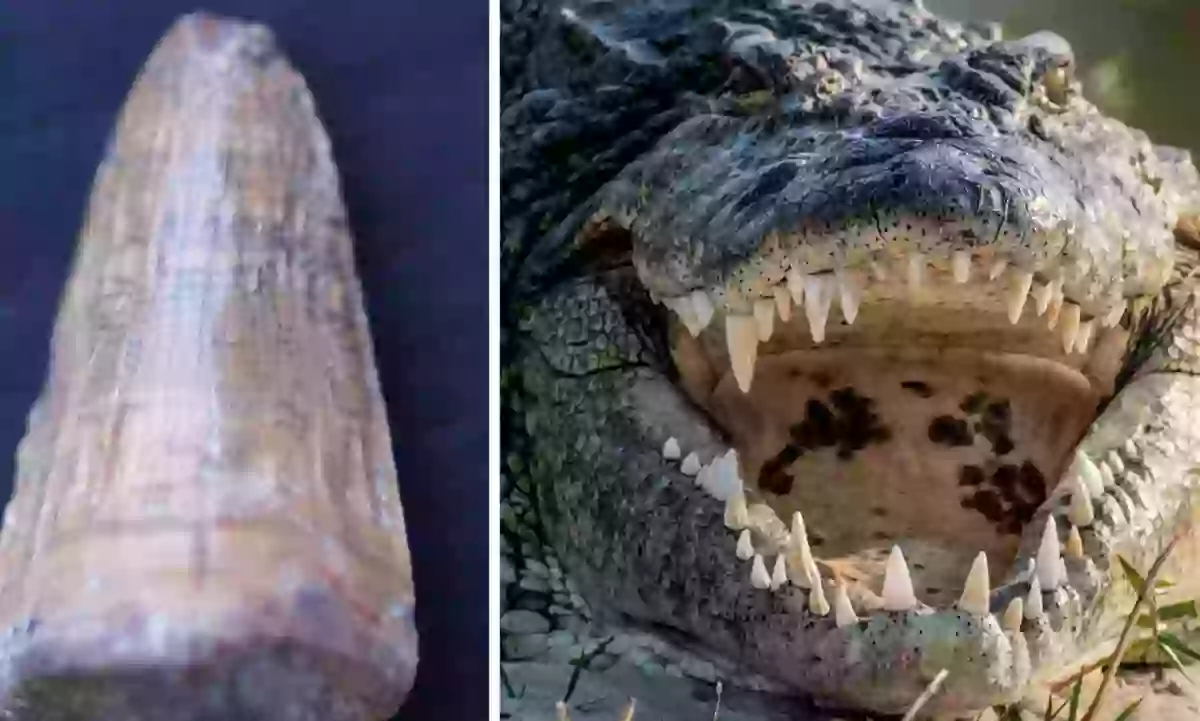4-Million-Year-Old ‘Last Crocodile in Europe’ Resurfaces from the Sands of Time

Remarkable Discovery: ‘Last Crocodile in Europe’ Emerges from 4-Million-Year-Old Fossils in Spain
A groundbreaking archaeological expedition in the province of Granada, southern Spain, has unveiled an extraordinary array of ancient animal fossils, some dating back over 4 million years. Among these incredible discoveries is what researchers believe to be the remains of the “last crocodile” in Europe..
Unearthing Ancient Treasures: The Baza-1 Excavations
A team of paleontologists embarked on an excavation at the “Baza-1 site” in Granada, Spain, managed by the Catalan Institute of Human Paleoecology and Social Evolution (IPHES). Though the site was initially uncovered in 1996, systematic excavation work resumed in 2000 and 2001, leading to some astonishing discoveries.
A Treasure Trove of Over 500 Fossils
From an area no larger than 320 square feet, researchers have unearthed an impressive collection of more than 500 fossils, all around 4.5 million years old. What makes these findings particularly exciting is the excellent state of preservation of these ancient bones.
Meet the Prehistoric Inhabitants: A Diverse Cast of Characters
The fossils uncovered represent a diverse assembly of prehistoric creatures, offering us a glimpse into a world long gone. Among them, we find the remains of mastodons, which were elephant-like mammals that no longer exist today. Rhinoceroses, two species of horses, bovids (ancestors of cattle), deer of various sizes, pigs, large carnivores, and turtles, complete this prehistoric menagerie.
Intriguingly, sifting through sediments extracted from the site has revealed an extensive collection of small mammal remains, including rodents, rabbits, and shrews. The fossil treasure trove also includes the remains of various amphibians, reptiles, and fish. What’s more, there is a substantial quantity of wood and plant remains, providing valuable insights into the ancient environment.
The Star of the Show: The Last European Crocodile
The most captivating discovery among these fossils is the tooth of a crocodile. This tooth represents a crocodile species of African origin, marking the first-ever such discovery at the Baza-1 site. Importantly, this find suggests that this crocodile species was possibly the last of its kind to inhabit Europe.
The Mesmerizing Mysteries of the Messinian Salinity Crisis
To understand the significance of this discovery, we must journey back in time to the Messinian salinity crisis, which unfolded roughly 6 to 5.3 million years ago. During this geological event, the Mediterranean Sea became isolated from the Atlantic Ocean, causing vast areas to dry up. What remained were hyper-saline waters, inhospitable to life.
The crisis eventually ended with a dramatic event known as the Zanclean flood, which reconnected the Mediterranean basin to the Atlantic, refilling the sea. This geological spectacle shaped the landscapes and ecosystems of the time, leading to fascinating questions about the creatures that inhabited the region.
Piecing Together an Ancient World: The Value of This Discovery
The significance of the fossils found at Baza-1 extends beyond the novelty of the crocodile tooth. Researchers are eager to harness this treasure trove to reconstruct the prehistoric environment of this site. Preliminary evidence suggests that the region was characterized by a tropical/subtropical climate marked by high temperatures and abundant rainfall.
This primeval ecosystem consisted of vast forests with some open areas where herbivores, such as three-toed horses, roamed and grazed. Unearthing this snapshot of ancient life will contribute to our understanding of the natural world that existed millions of years ago.
Conclusion
The excavation at the Baza-1 site in Spain has brought forth a remarkable collection of fossils, providing a glimpse into a world that existed over 4 million years ago. The presence of a crocodile tooth of African origin hints at a fascinating history of prehistoric Europe. This discovery has the potential to unlock a treasure trove of information about the region’s ancient climate, ecosystems, and the creatures that once called it home. As researchers continue their analysis, we eagerly await the stories these ancient fossils will tell.
Also read: Taylor Swift’s ‘The Eras Tour’ Dominates North American Box Office, Raking in $96 Million
Australian Regulators Take a Stand: Holding X Accountable for Avoiding CSAM Response Queries
